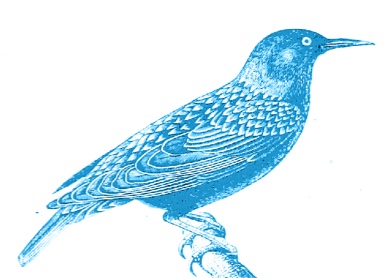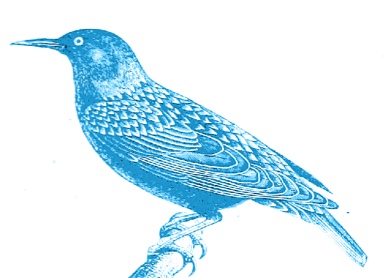On April 20, 2011, Kellogg hosted its second virtual breakfast in TheMotherhood to discuss the new 2010 Dietary Guidelines and the importance of a nutritious breakfast to start the day.
Sarah Woodside, registered dietitian for Kellogg, and Liz Ward, registered dietitian, author and one of the Kellogg’s Breakfast Council members, spoke to the group through a live video feed to discuss the nutrients a good breakfast should provide, options for healthy breakfasts on the go, recent research findings on nutrition, and more.
http://youtu.be/XTfrYsDh_6o
As Sarah Woodside noted, “At Kellogg, we believe that great days start with great breakfasts.” Read on for ideas and suggestions about a healthful start to YOUR day!
Essential nutrients
In her opening remarks, host Sarah Woodside also revealed that Kellogg has talked to a lot of moms about what “great breakfasts” mean to them. They say great breakfasts are the ones that the entire family enjoys and provides them with the nutrition they need.
“However, knowing what nutrition the family needs isn’t always easy, especially when it seems like recommendations change all the time,” she said.
She pointed to an expert resource for nutrition information: the recently released Dietary Guidelines.
Dietary Guidelines for Americans and breakfast
The Dietary Guidelines for Americans are published jointly every five years by the Department of Health and Human Services (HHS) and the Department of Agriculture (USDA). The Guidelines provide authoritative advice about how good dietary habits can help promote health and help reduce risk for major chronic diseases.
This year, “the Guidelines are very much written with heightened awareness of obesity, poor diet and limited physical activity and the association each of these has with chronic disease and death in this country,” said host Liz Ward.
The Dietary Guidelines list four nutrients that American children and adults are not getting enough of: dietary fiber, calcium, vitamin D and potassium. Noted Liz, “Cereals are called out specifically in the dietary guidelines for helping Americans meet their B12, folic acid, iron and Vitamin D requirements.”
To improve nutrition even more, “I always add dried fruit, walnuts/almonds, and flax seed to my cereal,” said co-host Ilina Ewen, Dirt and Noise. “I don’t weigh or measure anything, but I do make sure the dried fruit doesn’t have added sugar.”
Breakfast has benefits including:
– Refueling the body after the night’s fast.
– Helping regulate metabolism to better control calorie intake the rest of the day.
– Helping achieve the needed intake of daily nutrients.
Common breakfast items can help provide the body with important nutrients, such as whole grains, fiber, fruit, dairy and lean protein.
“As a rule of thumb, breakfast should provide approximately 20% of your daily energy and nutrient needs,” said host Liz Ward.
And in addition to being healthy, breakfast can be fun! “One of my friends makes art with her toddler’s food,” said co-host Jessica Weaver, Vanderbilt Wife. She shared this link to illustrate her point: http://www.miskellany.com/2010/09/works-for-me-wednesday-toddler-food-art/
The importance of fiber
The Dietary Guidelines list fiber as one of the nutrients that adults and children aren’t eating enough of. Why is fiber so important?
“Fiber is key for overall health,” said host Liz Ward. “In fact, a new study published last month suggests that eating a high-fiber diet – particularly fiber that comes from grain foods like breakfast cereals – just may help you live a longer life. The study found that fiber intake was associated with a reduced risk of death from cardiovascular disease, infectious and respiratory illness and, for men, certain cancers.”
While the research is clear on the benefits of fiber, there is a lot of confusion about where to find fiber. Many people assume whole grain foods are high in fiber, but this isn’t necessarily the case.
If you have a picky eater – like co-host Debbi Smith, Debbi Does Dinner Healthy – try adding “flaxseed! You can add a bit when you make muffins/cake/bread, mix it in with cereal, granola, etc. I almost always add some when I bake – no one has ever noticed a taste difference,” said participant Brandie.
“Another thing I add, a little odd, is chia seeds,” suggested co-host Lauren Freeman, Health Happiness Hamstrings.
How else can you and your family get more fiber into your diet? Try some of these great-tasting ideas:
– Snack on fiber-filled fruit; pears and apples with their skin and raspberries are good choices.
– Make homemade trail mix by adding high fiber whole-grain cereal, such as Kellogg’s® Frosted-Mini-Wheats®, to raisins and nuts
– Lunch on lentil soup and higher-fiber crackers
– Make sandwiches on higher-fiber, whole-wheat bread piled with sliced veggies
– Add veggies and beans whenever and wherever you can, such as chopped celery and carrots to spaghetti sauce and chickpeas to salads
– Start the day with a bowl of one of the many Kellogg’s® cereals that provide fiber. Many kid cereals, such as Kellogg’s® Froot Loops® and Apple Jacks® contain 3 grams of fiber per serving. Kids can have the taste they love while getting a good start on the fiber they need each day.
Making breakfast both healthy and convenient
On hectic mornings, it can be tough to get everyone to sit down and have a healthy breakfast together.
“If you want something fast in the morning, you can eat 2 Kellogg’s Eggo Nutri-Grain Whole Wheat Waffles and some turkey sausage!” said participant Erin O. “It’ll double your dose of fiber from other frozen waffles.”
“I love those frozen waffles. So tasty! I like to spread some Greek yogurt on them with some honey and fresh fruit,” said co-host Monet Moutrie, Anecdotes and Apple Cores. She also noted that, for another fast breakfast option, “as a vegetarian…my husband relies on cereal for those B vitamins!”
To prepare breakfast more quickly, you can set out breakfast ingredients the night before (bowls and spoons, boxes of cereal, etc.), and participant Amy Lewis suggested creating “a breakfast menu – the kids ‘order’ by checking the boxes!”
Think outside the breakfast box
In addition, breakfast time doesn’t need to be limited to traditional breakfast food. “I love the idea of thinking outside the breakfast box,” said co-host Kate Selner, Kate in the Kitchen. “I’ve always told my son that I want him to eat something for breakfast, but it doesn’t exactly have to ‘be’ a breakfast item.”
Host Sarah Woodside pointed out that kids aren’t biased about what breakfast food should be, and eating a lunch item – such as half a turkey sandwich – at breakfast time is perfectly acceptable.
“That was a great suggestion,” agreed co-host Christine Satterfield, I Dream of Clean. “You’re right that they don’t have the preconceived ideas of what ‘breakfast’ foods are. Love the turkey sandwich idea.”
And to encourage kids to eat breakfast, get them involved in making it. “I know my niece and nephew love making breakfast with me on the weekends. Getting kids in the kitchen often helps them want to eat their morning meal!” suggested co-host Monet Moutrie, Anecdotes and Apple Cores.
The benefits of cereal
Cereal and milk is the leading source of ten nutrients in a child’s diet, plus it’s low in cholesterol.
“I find that if I skip breakfast, my energy level for the whole day is affected,” said co-host Dara Michalski, Cookin’ Canuck. “I always look for cereal with high fiber to keep me full through the morning. I have to avoid that mid-morning binge time!”
And there are alternative ways to eat cereal, rather than simply pouring milk over it. Host Sarah Woodside suggested using cereal and yogurt to create breakfast parfaits.
Co-host Andrea Updyke, Li’l Kid Things, endorsed that idea: “Cracklin’ Oat bran in vanilla yogurt is almost a dessert!” she said.
“That’s one of my faves,” agreed co-host Kristy Bernardo, The Wicked Noodle. “Healthy with great flavor, and the cereal adds a much-needed texture.”
Resources
Meal plans from Kellogg: http://loveyourcereal.com/FiberAndWholegrain.aspx
Scroll to the bottom of the page, and where it says “Find Fiber for Every Meal,” you can click the links to download PDFs of the meal plans.
Kellogg “Fiber Tracker” www.KelloggsNutrition.com
Recipe ideas from Kellogg: http://www2.kelloggs.com/RecipeLanding.aspx
“My cousin made a quiche with Corn Pops!! Be creative!” said co-host Jessica Weaver, Vanderbilt Mom: http://onceamonthmom.com/corn-pops-quiche-recipe/
Thanks to our wonderful hosts, Sarah Woodside and Liz Ward, for the informative and interesting discussion!
And a big thanks to our fantastic co-hosts!
Kristy, The Wicked Noodle
Ilina, Dirt and Noise
Lauren, Health Happiness Hamstrings
Dara, Cookin’ Canuck
Monet, Anecdotes and Apple Cores
Christine, I Dream of Clean
Kate, Kate in the Kitchen
Debbi, Debbi Does Dinner Healthy
Andrea, Li’l Kid Things
Jessica, Vanderbilt Wife
See the original Talk here: http://tmotherhood.wpengine.com/talk/show/id/62187


Take a Comment. Leave a Comment.
Read More ...
Influencer Marketing Resources: July 2025
Influencer Marketing Resources: June 2025
Influencer Marketing Resources: May 2025